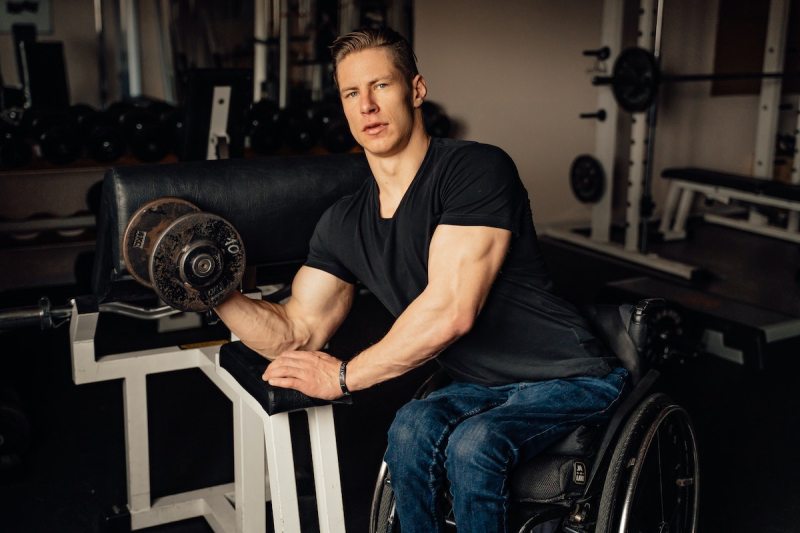When you’re only curling a dumbbell with one arm, you might think the other arm just hangs out, unaffected. In a fascinating new study, researchers set out to explore whether only training one arm would affect muscle strength and size in the other when we don’t train that side. Is it possible that doing bicep curls with your left arm somehow impacts the muscles in your right arm? Let’s take a look at the research.
The study

In a study published in The Scandinavian Journal of Medicine & Science in Sports, researchers wanted to understand whether unilateral or single-limb training with heavy weights impacted the strength in the non-working arm. The focus was on neural adaptations and muscle strength and size.
The study methods

The study involved 160 healthy younger adults who hadn’t done any resistance training in the last six months. Researchers measured muscle thickness and strength at the start and end of the study. They assigned the participants into one of four different groups:
- Control group — No training.
- D + ND — Training both arms.
- D only — Training only the dominant arm.
- ND only — Training only the non-dominant arm.
Over six weeks, study participants finished three training sessions every week for a total of 18 bicep curl sessions. Participants were allowed a maximum of five attempts to figure out their 1 rep max. During each heavy resistance training session, they completed four sets at around 70-80% of their 1 rep max. The sets had an 8-12 rep max range.
The effect of cross-education

Cross-education is a neurophysiological occurrence where researchers witness an increase in strength in an untrained limb after unilateral strength training on the opposite side. Changes at the muscular, spinal, and neural levels result in this cross-transfer. In another example, a basketball player might learn to dribble with his right hand, and then he’s able to successfully dribble with his left hand despite having no previous training on his left side.
Cross-education or cross-transfer occurs due to changes in the nervous system, not the muscles. The researchers were keen to see the extent of this cross-education effect involving the nervous system.
The results

Here are the conclusions:
Strength
- Non-dominant arm — The D + ND group gained 2.7 kg in strength in the non-dominant arm, and the ND-only group gained similar strength at 2.6 kg. The D-only group gained 1.5 kg in strength, whereas the control group that didn’t do any strength training lost strength in the non-dominant arm.
- Dominant arm — The D + ND group gained 2.5 kg of strength in the dominant arm, and the D-only group gained 2.3 kg. The ND-only group gained 1.3 kg; once again, the control group lost -0.1 kg of strength.
Hypertrophy
Muscle growth was only seen in the trained arm. The untrained arm didn’t show an increase in muscle size as a result of cross-transfer.

Neural Adaptations
While there wasn’t an increase in muscle growth, the researchers did see an increase in muscle strength driven by neural changes and cross-education. They concluded that unilateral or single-arm resistance training boosted strength in the other untrained arm without changing the muscle thickness. This is called the cross-education of strength.
The takeaway

It turns out that doing bicep curls and resistance training on one arm can increase strength in your other arm due to neural changes, but it likely won’t increase the muscular size of the untrained arm. Not doing any resistance training at all could cause a loss in muscle strength. Researchers continue to explore the fascinating concept of cross-education. For now, it’s just another reason to continue putting in the effort and curling those weights.




